==================
A Caveat and Affiliates
First off, a little caveat: within my articles you will find affiliate links, meaning if you buy them, I get a small commission. Your cost is not affected. In addition, I am an Amazon Associate and I earn from qualifying purchases on Amazon.
And yes, if I say that I recommend a product here, it means I truly believe it is a good product. I refuse to recommend any product that I have not researched and believe to be a good value.
Even better, I provide you with a very clear picture of the product, it’s use, and the probable value.
Earning your trust is important to me. I run this website myself and the commissions and donations help support the site.
Sound reasonable and fair enough? Let’s continue to the article.
==================
Taking care of your trees and preparing them for colder months is essential. Here is everything you need to know about fall tree care.
Spring and summer have arrived and gone, and you may be looking at your backyard with desolation because you didn’t get what you envisioned with tree care. However, fall tree care is the perfect time to give your trees extra care and love to prepare them for winter.
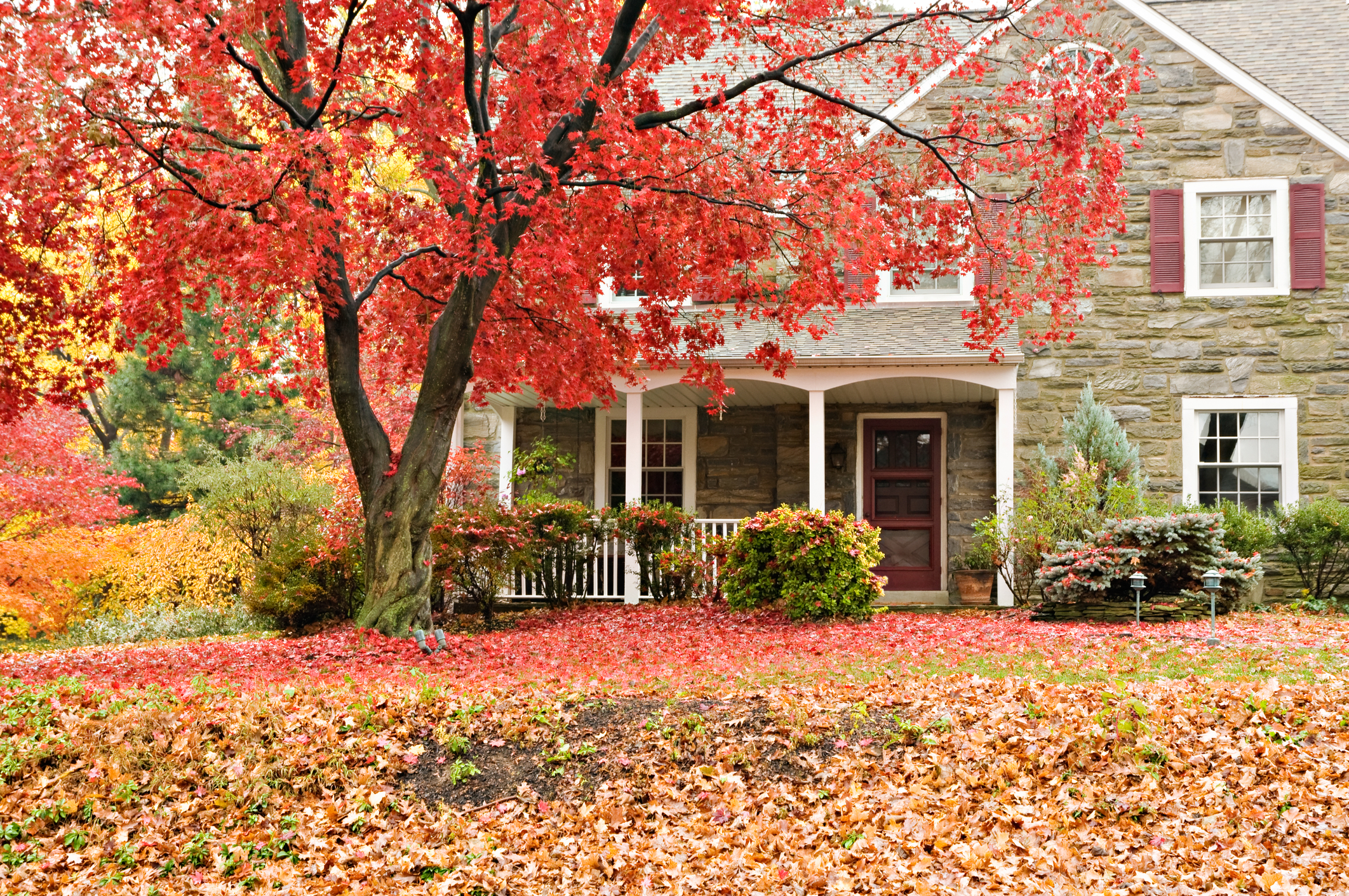
Fall Tree Care
The winter dormancy period is dramatic and often misunderstood. For instance, a common myth is that trees are shutting down and going to sleep due to leaf loss. However, remember that your trees are going through a growth and vigor period in many ways.
In the colder months (September through December), your trees undergo some of the most dramatic growth because twigs, branches, and roots start gathering and storing essential food reserves for the next season. While much of this growth is hidden and unobserved as it occurs below ground, it is critical for your trees and the coming growing season.
Moreover, winter can be challenging for both deciduous and evergreen trees. From water loss to potential temperature fluctuations and subzero temperatures to drying winds, your trees go through a harsh environment in the winter season.
So, what should you do to help trees prepare better for colder months? Here are the top fall tree care tips that can pay great dividends, allowing you to grow vigorous and structurally sound trees in your backyard. Our fall tree care tips also include when to trim trees in the fall and when to fertilize trees.
So, let’s get started!
1. Enhance the Soil
The soil beneath your trees is rich when growing trees in the forest. Remember that the presence of fallen leaves and organic matter on the ground is an excellent source of essential nutrients for the trees. On the other hand, when you grow trees in your backyard or landscape, it is totally different.
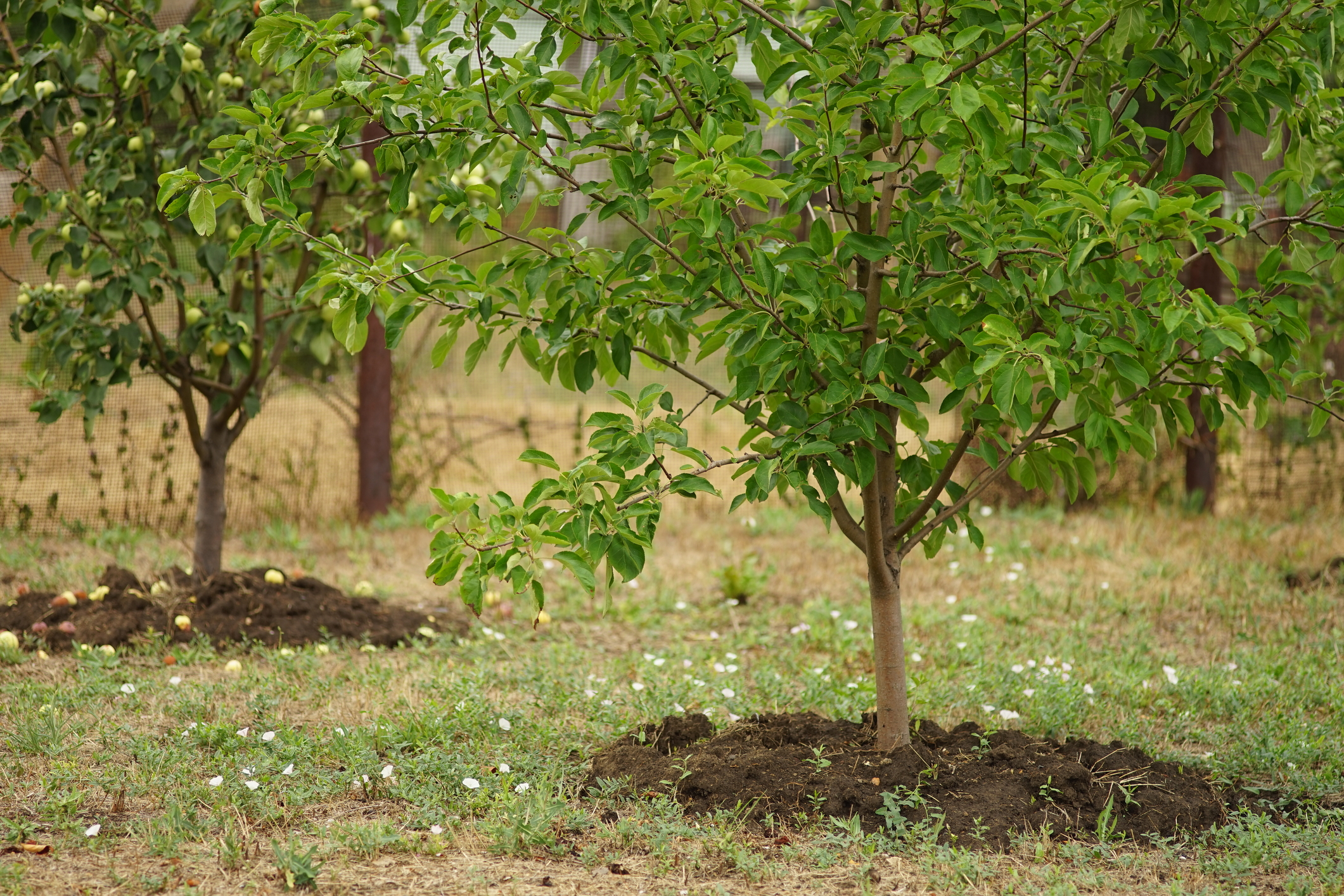
Fall Planting Soil
So, there are a few specific factors you should consider to enhance the soil for your trees. If you want to keep your trees flourishing, you will need to make the soil more like the forest.
Here are a few essential fall tree care tips to enhance the soil:
· Fertilizing Trees in the Fall
People often wonder when to fertilize trees. While extreme summer temperatures are stressful on your trees, cooler fall temperatures allow them to regain strength. A few reasons to feed your plants in fall include:
- Morning due in fall creates moisture that helps soil to absorb the fertilizer.
- Fall fertilization allows your trees to get essential nutrients and prepare better for the chilly weather.
- Robust root growth in fall will make your trees grow healthier and greener.
· When to fertilize trees?
One of the best fall tree care tips is fertilizing trees at least three weeks before the ground freezes. However, you can find the exact date by looking at the first frost date in your region. Additionally, that exact date is the most suitable time to fertilize your trees because the ground is still not frozen.
Generally, mid-October is a good time to feed your trees in many regions. In addition to finding the exact date for fall fertilization, the best time of the day for fertilization is in the morning or early evening. That’s because both times have cool temperatures.
· Freshen Up the Mulch in the Fall
In order to enhance the soil for your trees, it is essential to use high-quality, organic mulch to help keep them thriving. Applying mulch is also beneficial for maintaining soil temperature, conserving soil moisture, and adding more organic matter to the soil around your tree. That said, you can prepare organic mulch from wood chips, weed-free straws, or ground-up leaves.
· How to Apply Mulch in the Fall?
Applying mulch around your trees is a straightforward process. In the fall, you will need to cover the base of your tree with at least 2 inches of leaf and shredded hardwood. However, it is essential to avoid volcano mulching (piling the mulch around the trunk or over-mulching your tree).
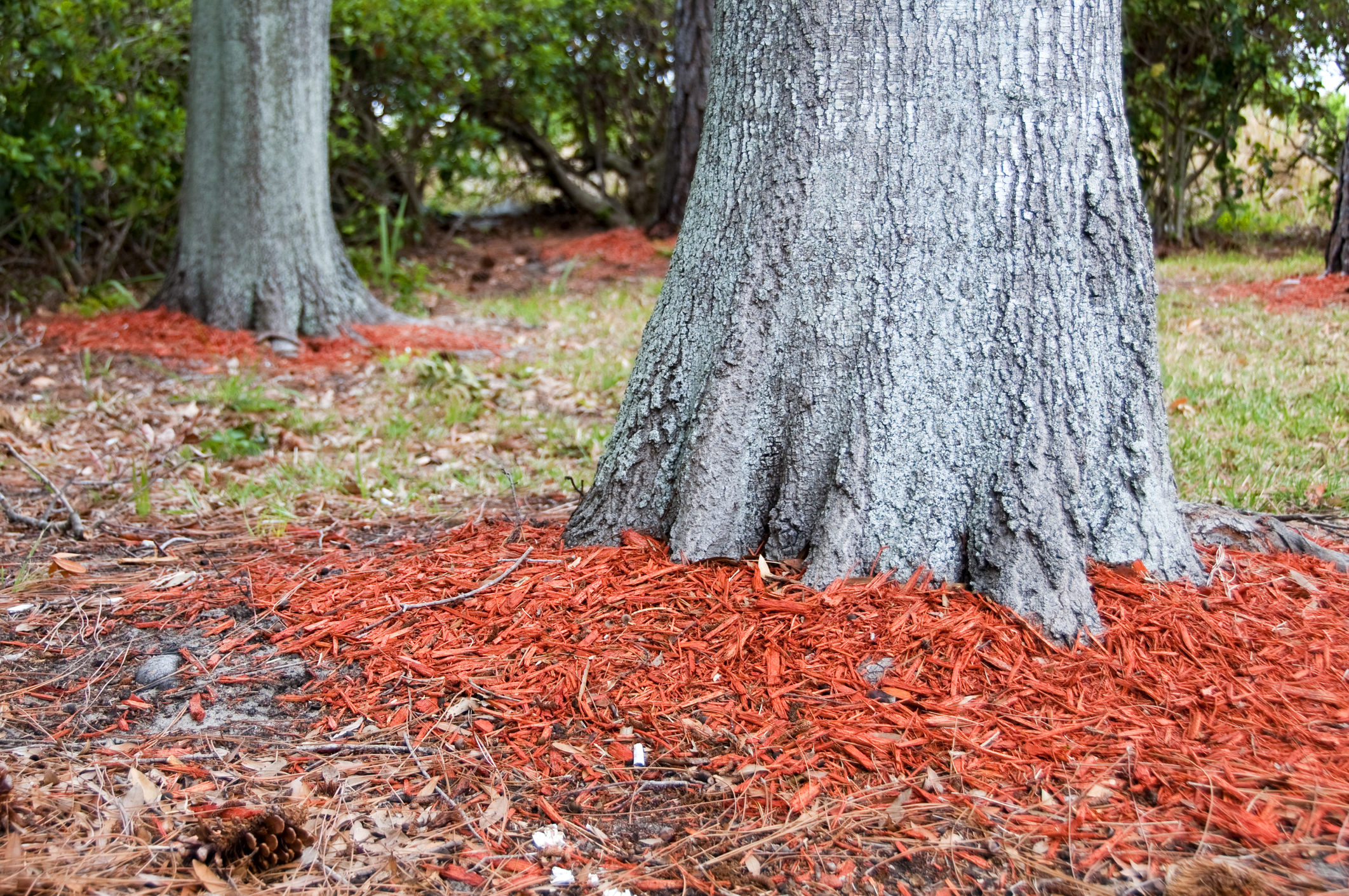
Mulch Around Tree
Ensure to keep the mulch up to 3-inch away from the trunk. It will help to avoid rotting the bark of your tree around the trunk. Moreover, for the best fall tree care, it is vital to perform fall marching before the ground freezes. It is also possible to mulch over fallen leaves rather than remove them.
· Reduce Irrigation
While irrigation systems are excellent for keeping your trees green and growing during dry, hot summer months, the arrival of fall means your trees will need less water since the soil is already moist. As your trees start experiencing leaf loss and go through a dormancy period, they will need less supplemental water.
Moreover, the soil will avoid water loss in colder temperatures for direct evaporation. So, reducing irrigation or turning it off to prevent flooding the ground during colder months is an essential fall tree care step.
Remember that flooded soil can cause suffocation and root rot. However, reducing irrigation when to the point where the soil is moist will help you prevent these issues.
2. Clean Up Phase for Fall Tree Care
The second most crucial fall tree care step is the cleanup round. During cleanup, you will be dealing with leaves and tree branches to ensure your tree is ready for the winter months ahead. Here are the fall tree care tips:
· Cleanup Leaf Piles from Bed and Turf
Although autumn leaves look so astonishing during the season, they do fall. So, raking up those fallen leaves is vital to avoid mold buildup and keep your yard grass healthy. You can use a plastic tarp for easy transportation when raking up the leaves.
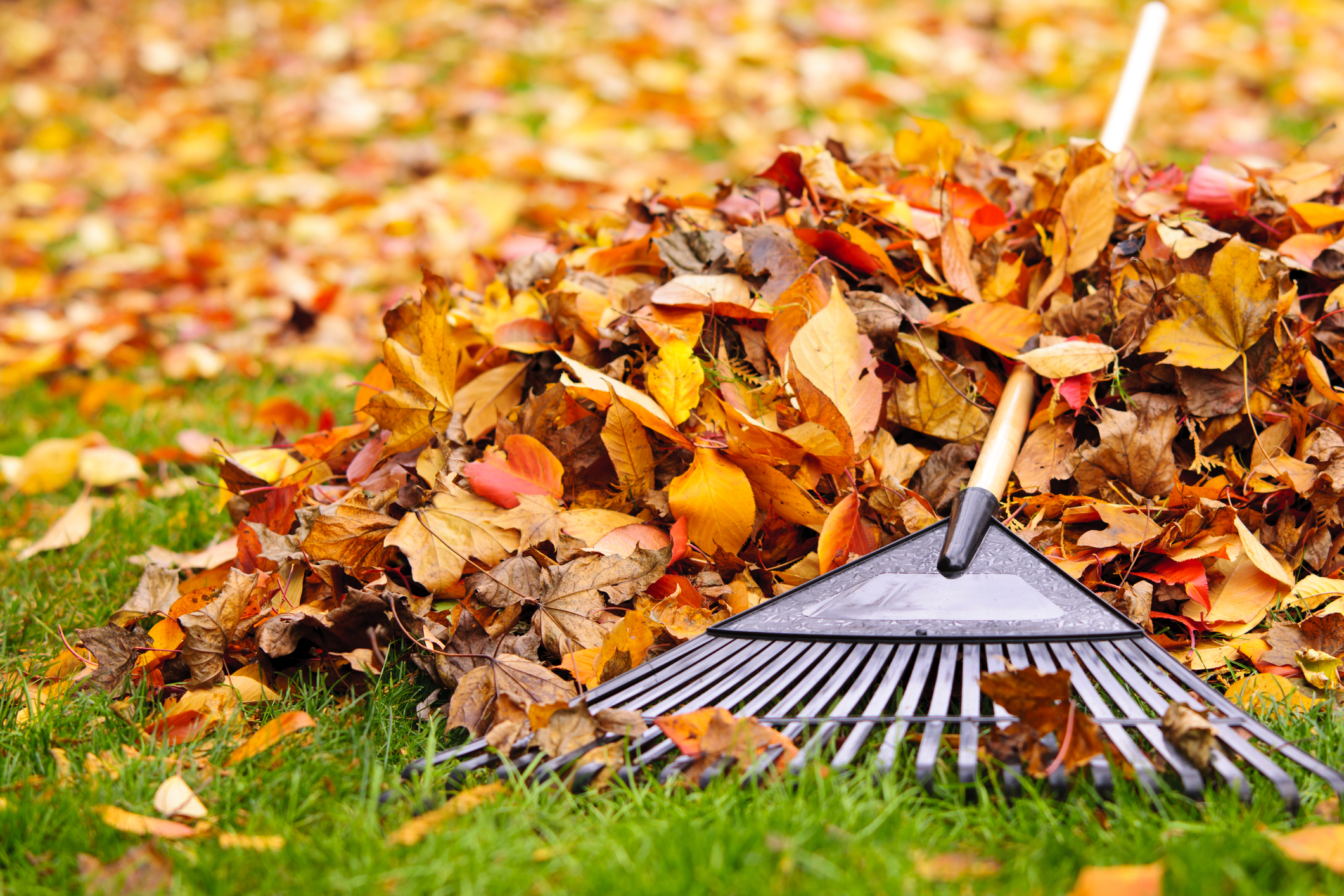
Cleaning up Leaves
Moreover, rake leaf matter and lawn clipping from the ground and gutter to a compost bin. Professional gardeners recommend flipping leaf piles with a garden fork once a month for enhanced aeration. You can also use this for next year’s mulching or compost to provide your trees with high-quality and natural organic matter.
Now, let’s discuss when to trim trees in the fall!
· Trimming Trees in the Fall
People often ask when to trim trees in the fall. While experts suggest not trimming your trees in the fall, there are a few pruning tasks you can perform with confidence, such as lifeless limbs, unsafe branches, etc.
Trimming your trees is a vital annual practice. Removing dead, diseased, or affected branches from your trees is essential for healthy growth. Additionally, you should also prune unsafe branches. Pruning branches, especially unsafe ones, will protect not only you but your home and other belongings. Moreover, annual pruning is also an excellent idea for influencing the shape and structure of your trees for future growth.
Here are a few tips for trimming trees in the fall:
- Trim dead branches to avoid succumbing to winds and winter snow.
- Ensure to remove loose, cracked-looking, and lifeless limbs near the trunk without leaving a stub.
- Avoid cutting branches yourself that are too large and hard to handle. Instead, call a certified arborist for help.
3. Prepare Your Trees for Winter Months
Preparing your trees for the coming chilly weather is inevitable. Ensure that your trees are strong enough, fully prepared to withstand, and can get through the factors, such as ice, frost, snow, and cold temperatures unharmed. Here are a few fall tree care steps to prepare your trees for the chilly season:
· Use a Cable or Brace to Support Weak Limbs
If your trees have large but weaker limbs, they will need some help to survive and get through severe weather conditions. So, cabling and bracing your trees is one of the effective ways to support weak limbs. This will help overextended tree limbs or poor branch unions to survive the winter season.
Moreover, it can also avoid the risk of stress and strain damage to your beloved trees caused by heavy snow or strong winds.
· Water Your Evergreen Trees Adequately
Fall is the perfect season to give your trees adequate water before winter arrives. Remember that good watering of your trees will help avoid the risk of dehydration and keeps your trees well-hydrated throughout the season. It is worth noting that severe winter temperatures can cause water loss, especially if you have evergreens while the roots are frozen.
That said, when creating a water supply in the soil, keep in mind that your trees need enough water for hydration to avoid dehydration in winter. It is essential to water your trees adequately throughout the fall season and keep the soil consistently moist. However, ensure not to saturate the soil.
You can regularly water your trees in the fall until the ground freezes. One practical fall tree care tip for an efficient water supply is to practice deep root watering once a week with slow soaking.
4. Inspect Your Trees
In addition, to trim trees in the fall, regular inspection of your trees is also a crucial fall tree care step. While you mind your lovely trees, looking for diseases and pests is always wise. Regular inspection will help you take immediate action against such backstabbers before they get out of control.
If you are new to gardening, you can consult with a professional arborist who can help you identify issues and prescribe treatments. Moreover, if you notice signs of stress, early fall color, or any apparent damage, it means your tree is facing a potential underlying problem.

In addition, to trim trees in the fall or support weak limbs, the fall season is also perfect for inspecting your trees for overall safety. Consulting with an arborist can help you assess the cause of tree failure from the root system. Furthermore, a professional tree inspection is even more essential if any grading or construction has happened near your trees.
· Insects and Diseases
It is worth noting that looking for insect or disease damage on your own can be tricky, especially if you are new to gardening. For instance, you will have to classify tree disease or pest, which can be challenging as they look similar. Secondly, you will have to know how to eliminate that specific pest or treat the disease at the right time.
So, it is always a good idea to consult with your local arborist and know if your tree has a pest or disease and how to treat it.
· Safety Hazards
Remember that trees in your backyard are your asset but can become a liability if not favored properly. In addition, to trim trees in the fall is also the best season to look out for potential tree safety hazards, such as broken or weak limbs.
While some problems can be as simple as pruning a small, lifeless branch, some may require you to call for professional help. Again, consulting with an arborist will help you determine a tolerable risk level and how to prevent it.
5. Plant More Trees
While fall is a perfect season to take care of your existing trees, it is also perfect for planting more trees in your backyard. It will give your newly-planted trees a jumpstart on developing roots in cool, moist soil during the dormancy period.
The conditions will be ideal for fall planting and robust root growth even after the freeze period. Once your fall-planting trees establish their roots, spring rainfall and warm summer temperatures will encourage new growth.
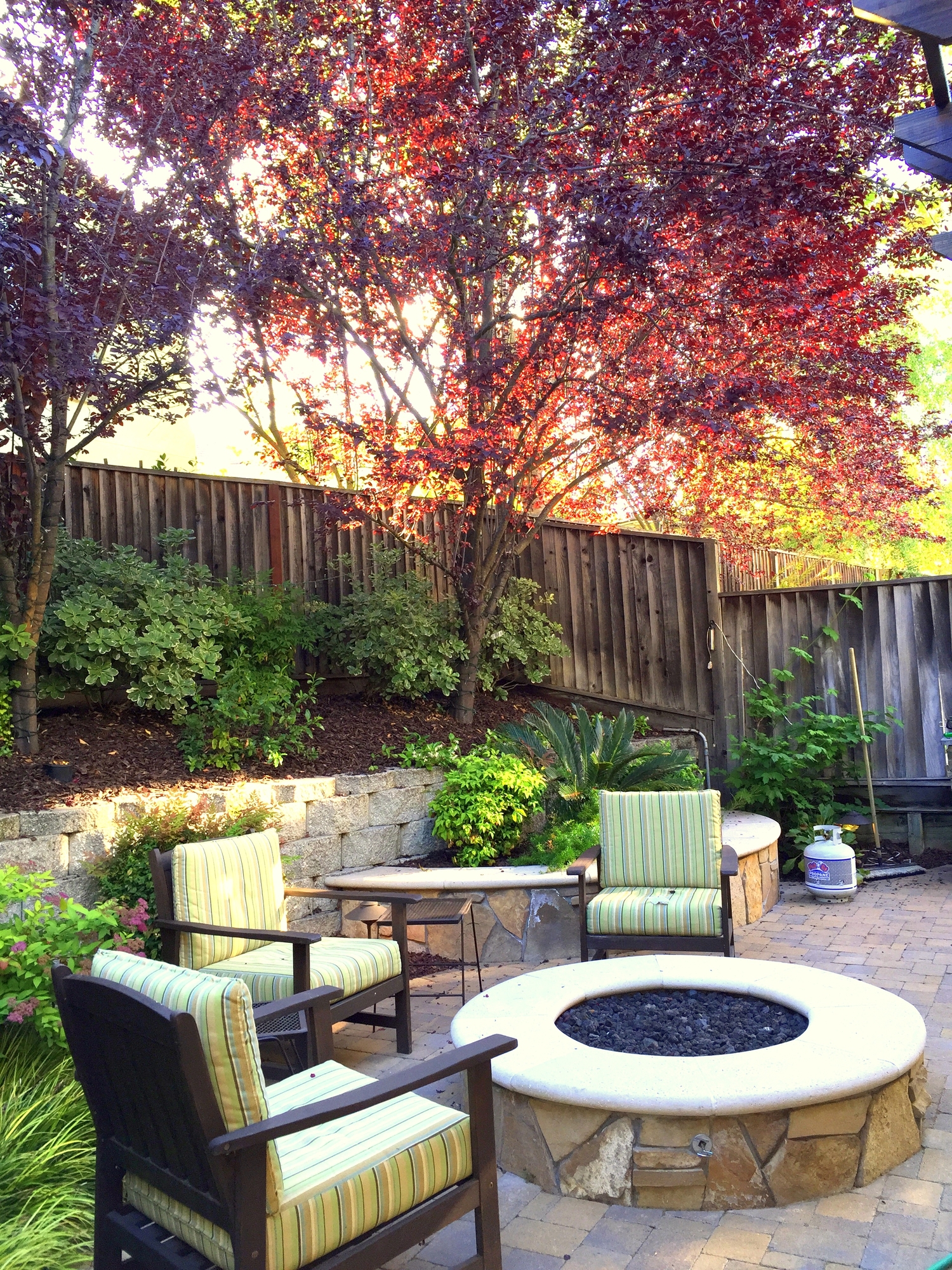
Plant More Trees in Fall
Moreover, fall is also an excellent time to plant shrubs, burlapped, or balled trees. However, avoid planting bare-root trees as the best time to grow them is later in the season when they are going through the dormancy period.
· How to Plant Trees in the Fall?
Here are a few helpful tips for fall planting:
- If you cannot plant your trees immediately, store them in a cool, dry place for a week or so. In this regard, the basement of your home is a great place.
- If you cannot plant your trees in a week either, consider heeling in your trees. Moreover, be proactive, dig holes before the chilly weather arrives, and store the dirt from the holes in a tool shed to prevent hardening.
- While planting trees in the fall, don’t forget to apply mulch around the base of your trees. It will reduce the risk of freezing and thawing.
- It is recommended not to plant your trees in containers. However, if you are planning to plant trees in pots for the season and then transplant them in spring, keep your pots indoors.
- When transplanting your trees in the spring, it is vital to introduce them slowly to outdoor conditions. You can leave them outdoors in pots before transplanting them into the ground.
Wrapping Up
Fall is a perfect season for planting new trees and caring for your existing ones. While fall planting may sound a bit intimidating at first due to the winter months, trees are going through a dormancy period and shouldn’t be affected. After reading this post, we hope you will have a clear idea of when to trim trees in the fall and when to fertilize trees.
You Might Also Like:
